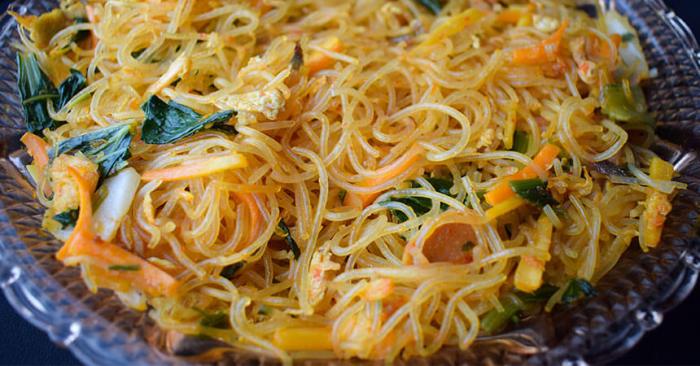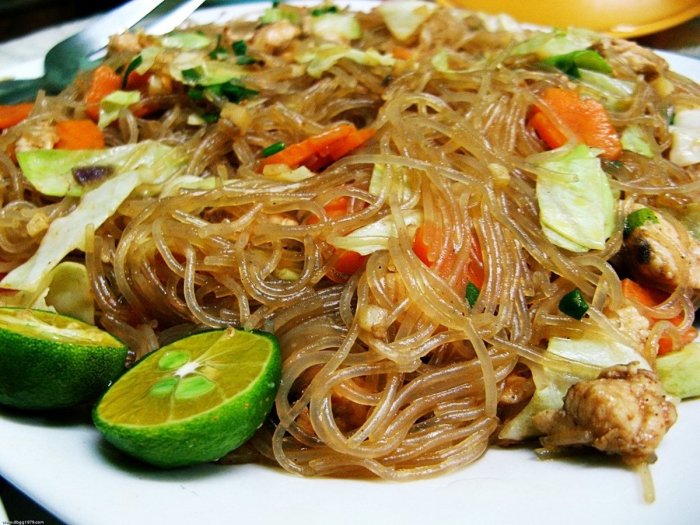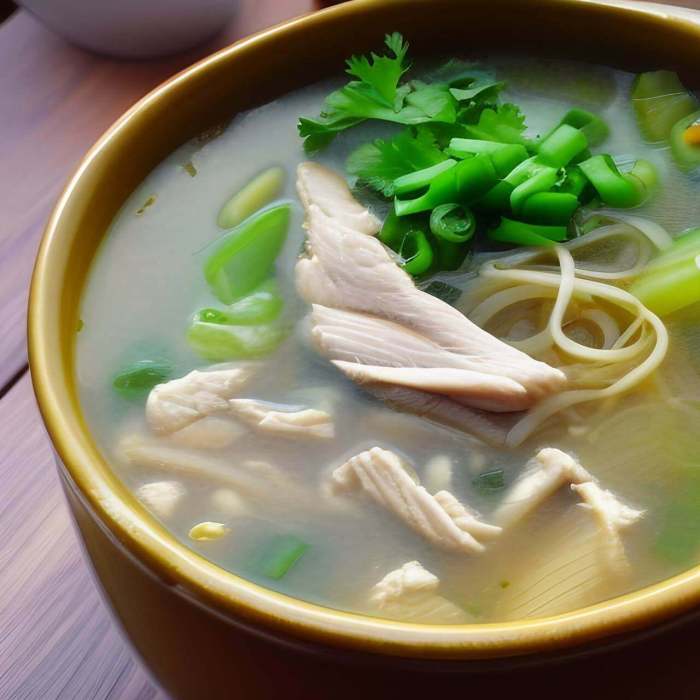The History and Origin of Sotanghon

How to cook sotanghon filipino style – Sotanghon, also known as cellophane noodles, is a type of glass noodle made from mung bean starch. It is a popular ingredient in Filipino cuisine and is commonly used in soups, stir-fries, and salads. The word “sotanghon” is derived from the Chinese term “tang hoon,” which means “soup noodle.”
Ingredients for Sotanghon Filipino Style
To make sotanghon Filipino style, you will need the following ingredients:
- 1 pack of sotanghon noodles
- 1/2 pound of chicken breast, sliced into thin strips
- 1/2 cup of shrimp, peeled and deveined
- 1 small carrot, julienned
- 1 small onion, chopped
- 3 cloves of garlic, minced
- 1 tablespoon of soy sauce
- 4 cups of chicken broth
- Salt and pepper to taste
- Green onions for garnish
Instructions for Cooking Sotanghon Filipino Style
1. In a large pot, heat some oil over medium heat and sauté the onions and garlic until fragrant.
2. Add the chicken and shrimp to the pot and cook until they are no longer pink.
3. Pour in the chicken broth and soy sauce, and bring the mixture to a boil.
4. Add the carrots and sotanghon noodles to the pot and simmer until the noodles are soft.
5. Season the dish with salt and pepper to taste.
6. Serve the sotanghon hot, garnished with green onions.
Tips for Cooking Perfect Sotanghon
– Soak the sotanghon noodles in hot water before cooking to soften them.
– Do not overcook the noodles, as they can become mushy.
– Feel free to add other vegetables or proteins to customize your sotanghon dish.
What Makes Sotanghon Filipino Style Unique?
Sotanghon Filipino style is unique because of its combination of flavors and textures. The savory broth, tender chicken and shrimp, and soft noodles create a comforting and satisfying dish that is perfect for any occasion.
Solution for Common Sotanghon Cooking Problems: How To Cook Sotanghon Filipino Style

If your sotanghon noodles are too dry, simply add more broth or water to the pot and simmer until the noodles have absorbed the liquid. If the dish is too salty, you can balance it out by adding a squeeze of lemon juice or a sprinkle of sugar.
Detail Information about Sotanghon Noodles

Sotanghon noodles are gluten-free and low in fat, making them a healthy option for those with dietary restrictions. They are also a good source of carbohydrates and protein, making them a filling and nutritious choice for any meal.
Describing the Texture and Flavor of Sotanghon
Sotanghon noodles have a slippery and chewy texture that is similar to glass noodles. They have a mild flavor that pairs well with a variety of ingredients, making them a versatile choice for many different dishes.
Hey there! Have you ever wanted to learn how to cook rice Arabic style? Well, look no further! I found this amazing guide on how to cook rice Arabic style that breaks down the process step by step. It’s definitely worth checking out if you want to master the art of making delicious Arabic rice dishes.
Conclusion
Overall, cooking sotanghon Filipino style is a delicious and nutritious way to enjoy this traditional dish. With the right ingredients and cooking techniques, you can create a flavorful and satisfying meal that will delight your taste buds and warm your soul.
Hey there! Today, let’s talk about how to cook rice Arabic style. If you’re looking to add a Middle Eastern flair to your meals, this link on how to cook rice Arabic style will guide you through the process step by step. From choosing the right type of rice to the perfect cooking technique, you’ll be whipping up delicious Arabic rice in no time!
Frequently Asked Questions about Sotanghon
1. Can I use other types of noodles in place of sotanghon?
2. How long does it take to cook sotanghon Filipino style?
3. What other ingredients can I add to sotanghon to enhance the flavor?
4. Is sotanghon a healthy dish to eat regularly?
5. Can I make a vegetarian version of sotanghon?
